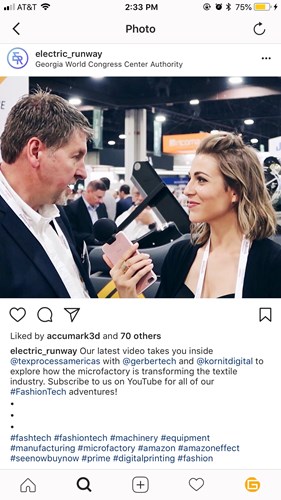How to Identify a Potential Influencer
Posted on July 30, 2018
Influencer programs are prevalent in public relations campaigns. If you are looking for an influencer for your organization, finding one who will just repost content or finding one you pay to be a third party endorser — and everything in between — takes negotiating finesse. Influencer research should be done by using several platforms. As an example, Agility and Cision have sophisticated algorithms to find potential influencers on social platforms or other online and print publications. Additionally, if you are just looking for a social influencer, perhaps tapping the native platforms and hashtag research would be advantageous.
Look at bloggers, and what brands they are associated with, as well as their ability to tell a story in a unique way. Sometimes your list can be pretty long. You should narrow your list down based on:
- Quality of content
- Writing style
- Number of platforms and
- The strength of the influencers audience
The level of interaction the influencer has with their audience helps the audience feel more connected and therefore makes it a loyal audience. Engaging an influencer takes research. It is important to find out who is following them and engaging in their content, and if they are an audience that aligns with your brand.
Another research point to determine which influencer is right for your brand is understanding the adjacent audiences they may have following them. Hypothetically, if you are selling tables, you could target an influencer who may have audiences that are designing chairs. Even though they may not be a direct target audience, when the chair designers interact with your influencer’s content, your audience network can grow exponentially.
It is easy to fall into potential traps as you conduct your influencer research. And, as always, there are buyer-beware tips that can help protect your investment. As with many industries, fraud occurs in the influencer world. Some influencers have bought into a network where one will comment and “like” other influencer information to bump up their engagement numbers. Buying followers is not a transparent way for influencers to have an audience. Companies want to make sure their influencer is engaging with their target audience, and actively participating within conversations. If they rarely engage with their audience, but have a lot of followers, you should be wary of engaging with them. You need a solid understanding of who their audience is. It is also a good idea to request analytics from their last campaign to ensure they are truly engaging audiences that fit your criteria.
Once potential influencers are determined, key tips in negotiating with them include understanding their ideas for telling your story, what tactics they would like to use and how they would marry those tactics to be consistent with your brand’s voice. Make sure their platforms align with your target audience’s platforms.
You should also consider if you will want paid or unpaid engagement, or a combination of both, with any potential influencers. There are several types of influencers that fit in a variety of paid or unpaid ranges including macro-influencers. These can range from journalists or bloggers who create content for a living to everyday consumers who love the brand and purchase it regularly. Be willing to work with the influencer and negotiate a fair price in whatever form it comes — cash or products.
Once you have engaged your influencers you can execute your program. If you are using social media when the program launches, make sure you are sharing the influencer content on your channels. Promoting posts will also help amplify your message. Be sure to engage with your audience just as you want your influencer to engage with theirs. Solicit employee involvement asking them to share, like and engage with content as they may be an influencer themselves with potential customers. Use all the tools to promote. Make sure hashtags are agreed upon. Create anticipation if it is before an event and have fun with it. Your audience will thank you for bringing fresh content and teaching them more about the industry, products and adjacent markets.


